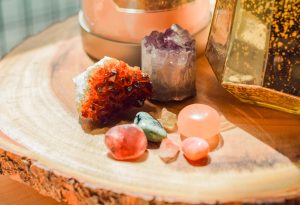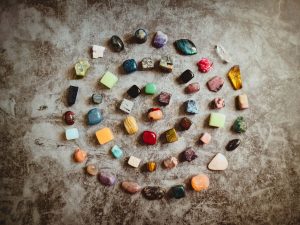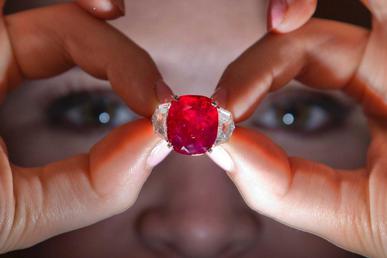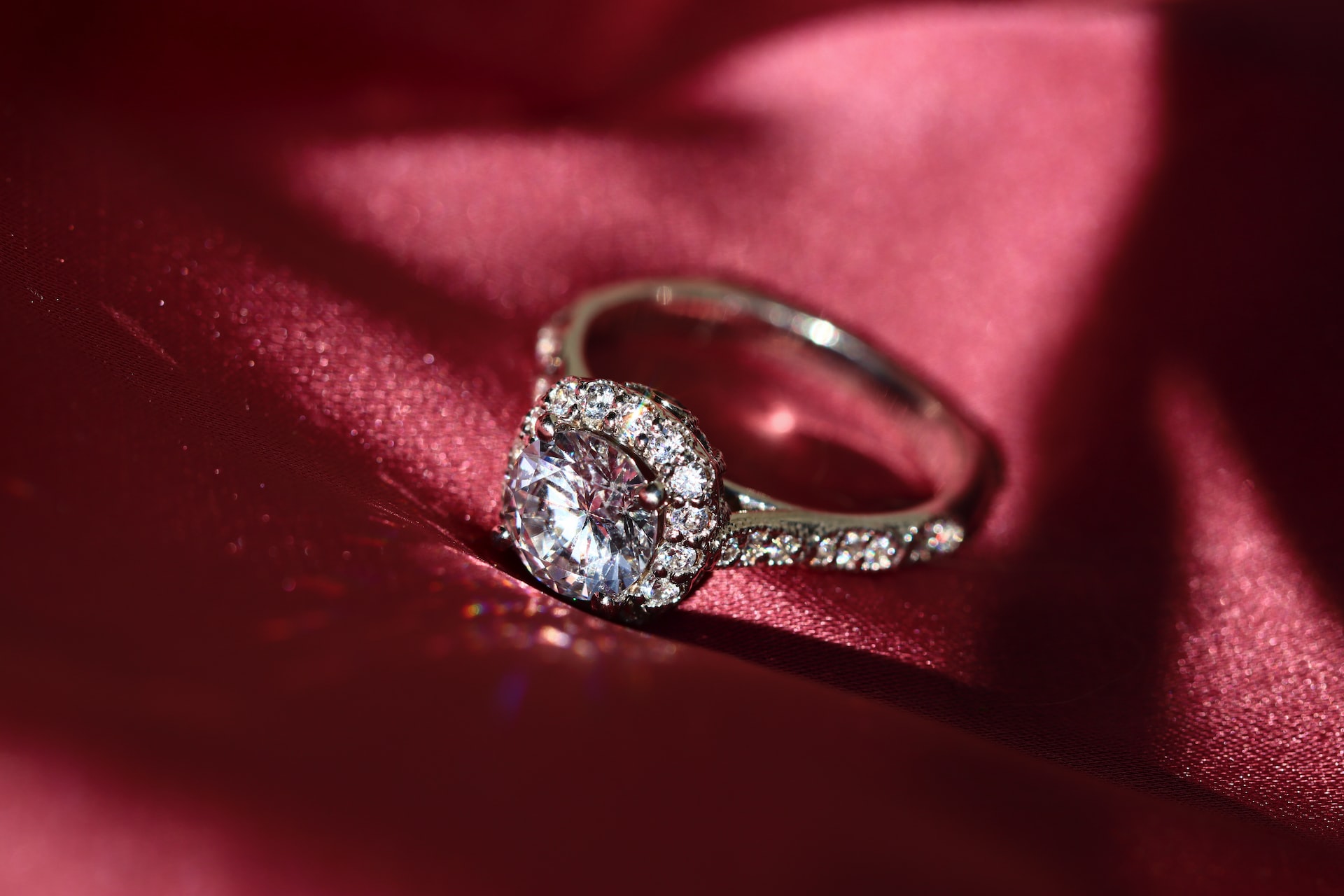Gemstones have been treasured for centuries for their beauty, rarity, and perceived mystical properties. But with the rise of synthetic gemstones and imitation jewelry, it can be difficult to determine if a gemstone is real or not. Whether you’re buying a piece of jewelry or inheriting a family heirloom, it’s important to know if the gemstone is authentic.
6 Steps to Tell if you have a Real Gemstone
- Conduct a visual inspection: Start by examining the gemstone closely with your naked eye. Look for any natural imperfections, such as tiny cracks, scratches, or inclusions. Real gemstones are formed naturally and often have unique characteristics that make them imperfect, so any signs of uniformity or smoothness may indicate a fake gemstone.
- Check for hallmarks: If the gemstone is set in jewelry, look for hallmarks or markings on the metal. Real gemstones are often set in high-quality metal such as gold, platinum, or silver, and the metal hallmark should match the stamp on the piece of jewelry. If there is no hallmark or the hallmark doesn’t match the metal, it may indicate a fake gemstone.
- Conduct a light test: Hold the gemstone up to a light source, such as a flashlight, and observe how the light passes through it. Real gemstones will refract the light in a unique way, creating a sparkle and rainbow effect. If the gemstone does not produce any refracted light or has a dull appearance, it may be a fake gemstone.
- Perform a water test: Fill a glass with water and drop the gemstone into it. Real gemstones are denser than water, so they will sink to the bottom of the glass. If the gemstone floats or sinks slowly, it may be a fake gemstone.
- Conduct a hardness test: Use a piece of glass or a ceramic plate to test the hardness of the gemstone. Real gemstones such as diamonds and sapphires are very hard and can scratch glass, while softer gemstones like pearls and opals cannot. Try scratching the surface of the plate with the gemstone, and if it leaves a scratch, it may be a real gemstone.
- Perform a thermal conductivity test: Use a thermal conductivity probe to measure how quickly the gemstone conducts heat. Real gemstones, such as diamonds, conduct heat very quickly, while fake stones may not.
Conduct a Visual Inspection
- Use a magnifying glass: To get a closer look at the gemstone, use a magnifying glass or jeweler’s loupe. This will help you see any natural imperfections or inclusions that are present in the stone.
- Look for inclusions: Real gemstones are formed naturally and often have unique characteristics that make them imperfect. Look for any tiny cracks, scratches, or inclusions within the stone. Inclusions are often described as “fingerprints of nature” and can help confirm the stone’s authenticity.
- Check the color: Some gemstones, like sapphires, have a distinct color that can help confirm their authenticity. Look for any variations or color zoning within the stone that may be natural. For example, a natural sapphire may have color variations from blue to violet.
- Look for uniformity: Fake gemstones are often manufactured to look perfect and uniform, so any signs of uniformity or smoothness may indicate a fake gemstone. Real gemstones are often imperfect and have unique characteristics that make them one-of-a-kind.
- Compare with known authentic gemstones: If you have access to a collection of authentic gemstones, compare the stone in question to them. This can help you identify any differences or similarities and confirm the stone’s authenticity.
Check for Hallmarks
- Identify the hallmark: Look for any hallmarks on the gemstone or its setting. Common hallmarks for precious metals like gold and silver include stamps with numbers and letters that indicate the purity of the metal. Some gemstones may also be hallmarked with a specific logo or symbol that represents the gemstone’s origin or quality.
- Research the hallmark: If you identify a hallmark, research its meaning and significance. Look up the hallmark in a jewelry hallmark encyclopedia or consult with a reputable jeweler or gemologist. This can help you determine the authenticity of the gemstone and its setting.
- Check for consistency: If the gemstone is set in a piece of jewelry, check for consistency in the hallmark. For example, if the ring is made of 14K gold, the hallmark should indicate the same purity of gold. Inconsistencies in hallmarks may indicate a fake gemstone or a lower-quality setting.
 Perform a Light Test
Perform a Light Test
- Find a light source: Use a flashlight or any other light source to observe the gemstone.
- Observe the refracted light: Real gemstones refract light in a unique way, creating a sparkle and rainbow effect known as “fire.” Hold the gemstone up to the light and observe the way the light refracts within the stone. If the stone produces a noticeable sparkle or fire effect, it may be a real gemstone.
- Look for double refraction: Some gemstones, such as diamonds and garnets, have a property called double refraction. When you look through the gemstone, you may see a double image or a blurred line. If the gemstone displays double refraction, it may be a real gemstone.
- Check the color: Real gemstones often display unique color properties when held up to a light source. For example, a natural ruby may display a “red fluorescence” when held under UV light. If the gemstone displays any unique color properties, it may be a real gemstone.
Conduct a Water Test
- Fill a glass with water: Use clear glass and fill it with room-temperature water.
- Drop the gemstone in the water: Drop the gemstone into the water and observe its behavior. Real gemstones are usually denser than fake ones, and they should sink into the water.
- Look for any air bubbles: If the gemstone floats or creates air bubbles, it may be a fake gemstone. Real gemstones do not usually create air bubbles in the water.
- Observe any changes in the water: Some fake gemstones may release color or other substances when they come into contact with water. If you notice any changes in the color or clarity of the water, it may indicate a fake gemstone.
Conduct a Hardness Test
- Identify the gemstone: Determine the type of gemstone you have, as the hardness of the gemstone will vary depending on its type.
- Obtain a hardness scale: Use a Mohs hardness scale, which is a set of 10 minerals that are ranked according to their hardness. This scale is commonly used in the gemstone industry to determine the relative hardness of a gemstone.
- Test the gemstone: Use the hardness scale to scratch the surface of the gemstone. Begin with the softest mineral on the scale and work your way up until you find a mineral that can scratch the surface of the gemstone.
- Observe the results: If the gemstone scratches easily or is scratched by a mineral with a lower hardness ranking, it may be a fake gemstone. Real gemstones are typically harder and more durable and will not be easily scratched.
Perform a Thermal Conductivity
- Obtain a thermal conductivity tester: Purchase or borrow a thermal conductivity tester, which is a handheld device that measures the ability of a material to conduct heat.
- Identify the gemstone: Determine the type of gemstone you have, as the thermal conductivity of the gemstone will vary depending on its type.
- Test the gemstone: Place the gemstone on the thermal conductivity tester and activate the device. The tester will heat the gemstone and measure how quickly the heat is conducted through the stone.
- Compare the results: Compare the thermal conductivity reading of the gemstone to a chart of known thermal conductivity values for different types of gemstones. If the thermal conductivity of the gemstone is significantly different from what is expected for that type of gemstone, it may be a fake gemstone.
 So, How can you tell if you have a Real Gemstone?
So, How can you tell if you have a Real Gemstone?
In conclusion, there are several methods that can be used to determine the authenticity of a gemstone. A visual inspection can reveal certain signs of a fake gemstone, such as bubbles or scratches. A light test can show whether a gemstone is transparent or opaque, which can indicate its authenticity. Checking for hallmarks can provide information about the origin and quality of a gemstone. A water test can reveal whether a gemstone is dense or porous.
A hardness test can determine the durability of a gemstone, while a thermal conductivity test can help identify certain types of gemstones. It’s important to note that no single test can definitively determine the authenticity of a gemstone, and it’s always best to consult with a reputable jeweler or gemologist if you’re unsure about a gemstone’s authenticity.
Want to know whether Sri Lankan gemstones are worth your investment? Read it here.


 Perform a Light Test
Perform a Light Test So, How can you tell if you have a Real Gemstone?
So, How can you tell if you have a Real Gemstone?







